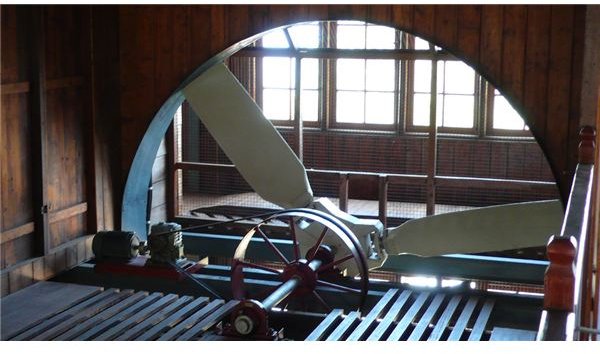Effective Ventilation of Buildings
Effective Ventilation of Buildings - Introduction
Ventilation of buildings is the process of circulating fresh air from outside to the interior and then pushing out the used, vitiated air from inside to the outside atmosphere.
Image: Flickr, Augapfel
Functional Requirements for Adequate Ventilation
A ventilating system should be capable of supplying fresh air inside a room and also removing the used air to outside. The factors that govern the operation of the ventilating system are the temperature of the air, humidity, and purity of the air.
The rate of air change depends on the number of persons inside, room temperature, nature of the work, etc. Air change per hour is the volume of air entered into a room in one hour with respect to the total volume of air.
The minimum air change required per hour is two and the maximum 60, but the optimum air change rate is five to six per hour.
Types of Ventilation
Natural Ventilation
In natural ventilation, the air change takes place through doors, windows and air holes in a natural way without the intervention of any eternal source. The natural ventilation depends on location of the building, its orientation, wind direction, velocity of air, outside temperature, etc. For effective ventilation in the natural way, the following points should be kept in view:
- The height of the room should be sufficient
- The size, number, and location of doors and windows should be effectively decided
- The inlet and exhaust should not be obstructed in any way
Mechanical Ventilation
In this system of ventilation, external systems are installed. These include exhaust fans, air conditioners, and inlet fans. In this process, not only the air movement but the temperature and humidity of the air are controlled. As such, the stay in the room is more comfortable. However the initial cost of installing the equipment makes the system slightly costly. The main mechanical systems are:
- Exhaust fans
- Inlet fans
- Combined exhaust and inlet fans
- Air conditioners
Functional Requirements for Effective Building Ventilation
- The number of air changes should be the optimum. It should be sufficient to provide comfort. If the number of air changes is less, it may cause suffocation to the inhabitants.
- The air supplied inside the room should be fresh, pure and free from dust, dirt and bacteria.
- To have proper wind effect, the outlet openings should be on the top near the roof level while the inlet openings should be near the floor level.
- The room humidity should be maintained at the correct level.
- The temperature inside should be maintained properly taking into account the outside temperature.
Thus it can be seen that for creating a healthy and comfortable living conditions inside, effective ventilation of buildings is to be maintained.
References:
- Hand Book of Civil Engineering, Vazirani and Chndola, S Chand and Co, New Delhi, 2004
- Building Construction and Construction Materials, G S Birdie and Ahuja, Dhanpat, Rai Pubishing House, New Delhi, 2007
- Construction Engineering and Management, S Seetaraman, Umesh Publications, New Delhi, 2003
